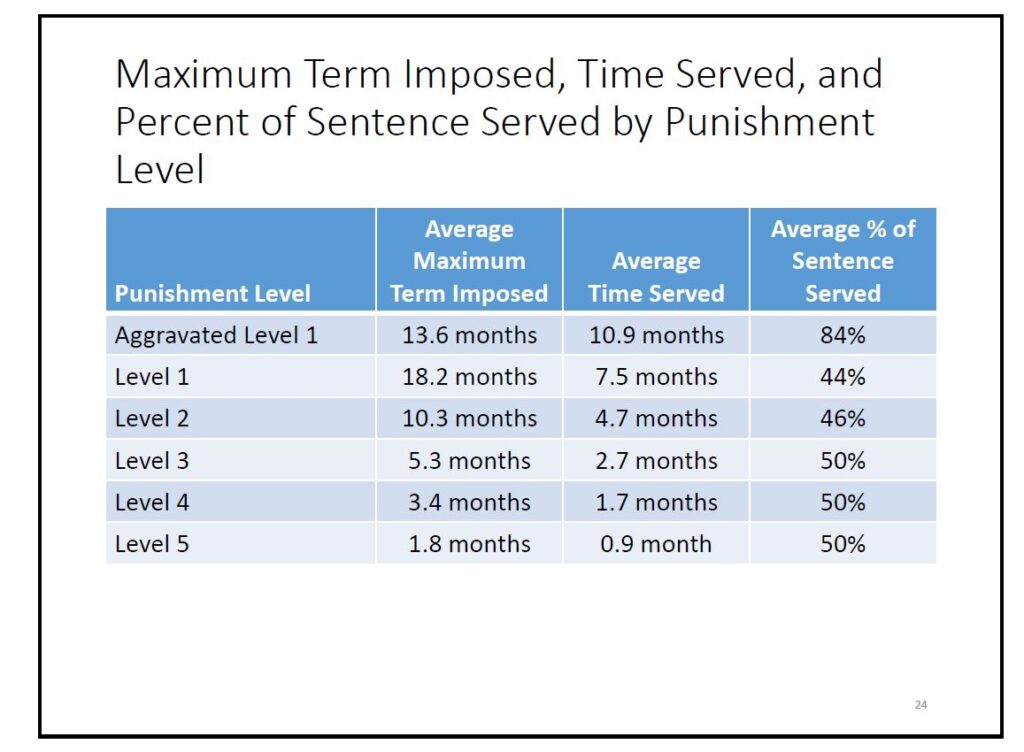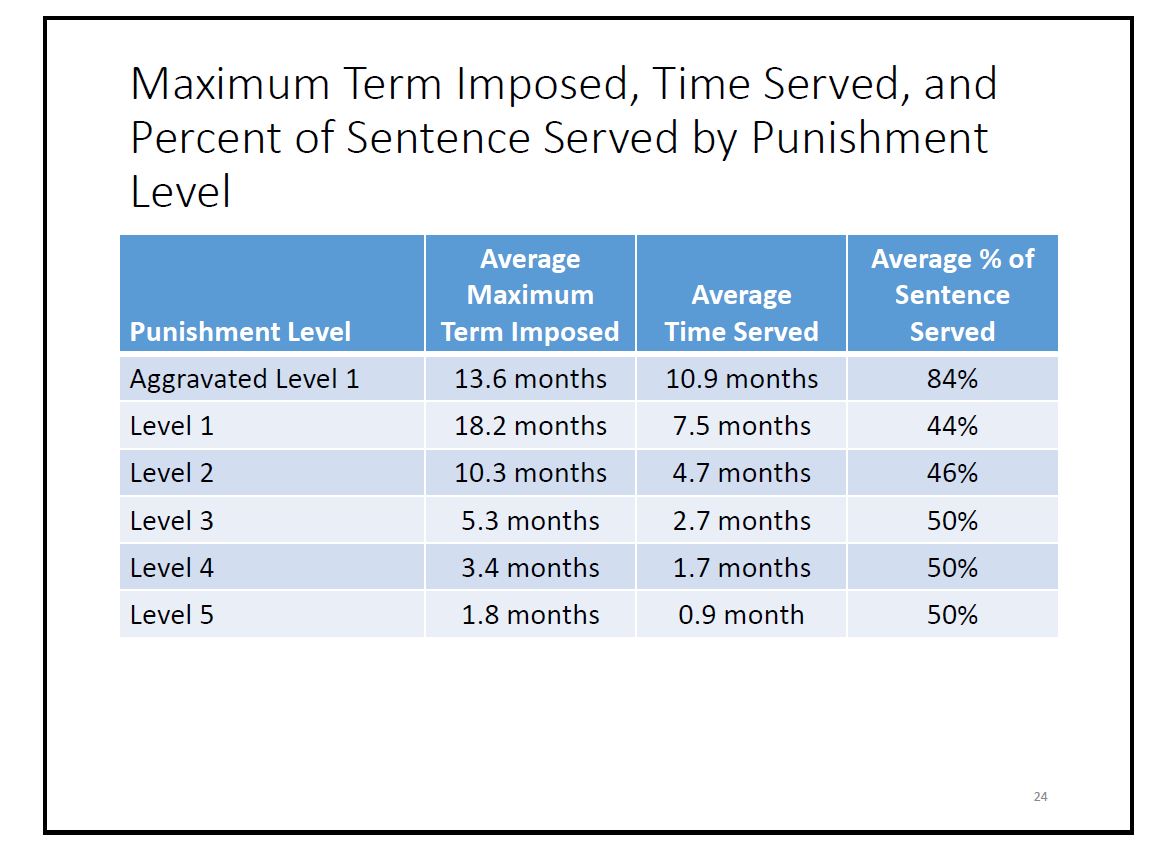
This blog is full of posts about the laws governing sentencing for misdemeanor DWI. Until now, however, I haven’t written much about how DWIs are actually sentenced. That’s because I didn’t know. While the North Carolina Sentencing and Policy Advisory Commission (“Sentencing Commission”) annually publishes a statistical report on the sentencing of felonies and misdemeanors, that report doesn’t include information about DWI sentences, which are governed by G.S. 20-179 rather than the Structured Sentencing Act. Thanks to the Sentencing Commission’s recent focus on DWI sentencing, however, I now have statistics about how DWIs are sentenced in courtrooms across North Carolina. And I think you’ll be interested in what they show.
The source. The Sentencing Commission compiled statistics on the 34,278 DWIs that were sentenced in fiscal year 2015 (July 1, 2014 through June 30, 2015) and the 1,609 active terms of imprisonment for DWI that concluded that fiscal year. The data was gathered from the Administrative Office of the Courts’ (AOC’s) Automated Criminal Infraction System (ACIS) and the Department of Public Safety’s Offender Population Unified System (OPUS).
The breakdown. Nearly 60 percent of misdemeanor DWIs (19,720 to be exact) were sentenced at the lowest level of punishment: Level 5. Two percent (643) were sentenced at the highest level of punishment: Aggravated Level 1. Sixty percent of DWI sentences placed the defendant on unsupervised probation, while 33 percent placed the offender on supervised probation. Only 7 percent of DWI sentences imposed an active term of imprisonment. This does not mean, of course, that 93 percent of DWI sentences in fiscal year 2015 did not require the offender to serve time behind bars. All Aggravated Level 1 and Level 1 sentences require that the defendant serve a period of imprisonment as a condition of special probation, as do most Level 2 sentences. Those terms of imprisonment do not have to be, and typically are not, served as an active sentence; instead they are served as a condition of special probation.
One surprise. I was surprised to learn that 51 percent of Aggravated Level 1 sentences in fiscal year 2015 were probationary. Aggravated Level 1 was added to the DWI sentencing structure in 2011, and is the sentencing level required for a defendant convicted of DWI if three or more grossly aggravating factors apply. An Aggravated Level 1 sentence must include a minimum term of at least 12 months and a maximum term of not more than 36 months. The sentence may be suspended only if a condition of special probation is imposed to require the defendant to serve a term of imprisonment of at least 120 days. If the defendant is placed on probation, he also must be required to abstain from alcohol for at least 120 days as verified by an approved continuous alcohol monitoring system. Because continuous alcohol monitoring is a service provided by a private vendor, at a cost that ranges from $10 to $12 a day, I suspected that many DWI defendants would not be able to afford a probationary Aggravated Level 1 sentence. The numbers from fiscal year 2015 indicate, however, that the costs of continuous alcohol monitoring did not prevent most defendants from receiving a probationary sentence.
Other numbers of note. The Sentencing Commission created the chart below based on OPUS data for active DWI sentences that expired, were paroled, or for which a defendant was released to post-release supervision in fiscal year 2015.

The chart may be of interest to judges and advocates alike as it reflects the average maximum term of imprisonment imposed for active DWI sentences at each level and the average percentage of those sentences that defendants served. (For DWI sentences, the maximum term of imprisonment is the significant number for most purposes. The minimum sentence is only relevant for purposes of determining a defendant’s eligibility for parole.) The average maximum term of imprisonment imposed for Aggravated Level 1 sentences was 13.6, only slightly above the statutory mandatory minimum of 12 months. Defendants served an average of 10.9 months. This reduction reflects (albeit slightly imprecisely) the statutory requirement that such defendants be released on post-release supervision four months before reaching the maximum term imposed. Aggravated Level 1 sentences are not parole-eligible and are not credited for good time.
The rules—and the resulting sentencing statistics—are different for the other five levels of DWI. Defendants sentenced at Levels 1 – 5 are eligible for parole and receive one day of good time credit for every day served in custody without an infraction of inmate conduct rules. Thus, even before accounting for parole, active DWI sentences at Levels 1 – 5 are cut in half. Those reductions are reflected in percentage-of-sentence-served column on the Sentencing Commission’s chart. So, while the average maximum term imposed for a Level One DWI was 18.2 months (higher than the average for Aggravated Level 1 DWIs), the average time served for a Level 1 sentence (7.5 months) was shorter than that for an Aggravated Level 1 sentence (10.9 months).
Why compile these statistics? At the request of legislators, the Sentencing Commission is studying the state’s sentencing and correctional policies and practices for impaired driving offenses. Legislators asked the commission to consider the availability of treatment and programming, the awarding of sentence credits, and the amount of time offenders actually serve and to pass along any recommended changes. Commission members have identified the following as their top five concerns regarding DWI sentences: availability/adequacy of treatment, swift resolution, sentence structure and administration, complexity of DWI laws, and the lack of access to existing tools (treatment & beyond).
Have your own impressions, ideas, and concerns? Please share them using the comment feature below.

